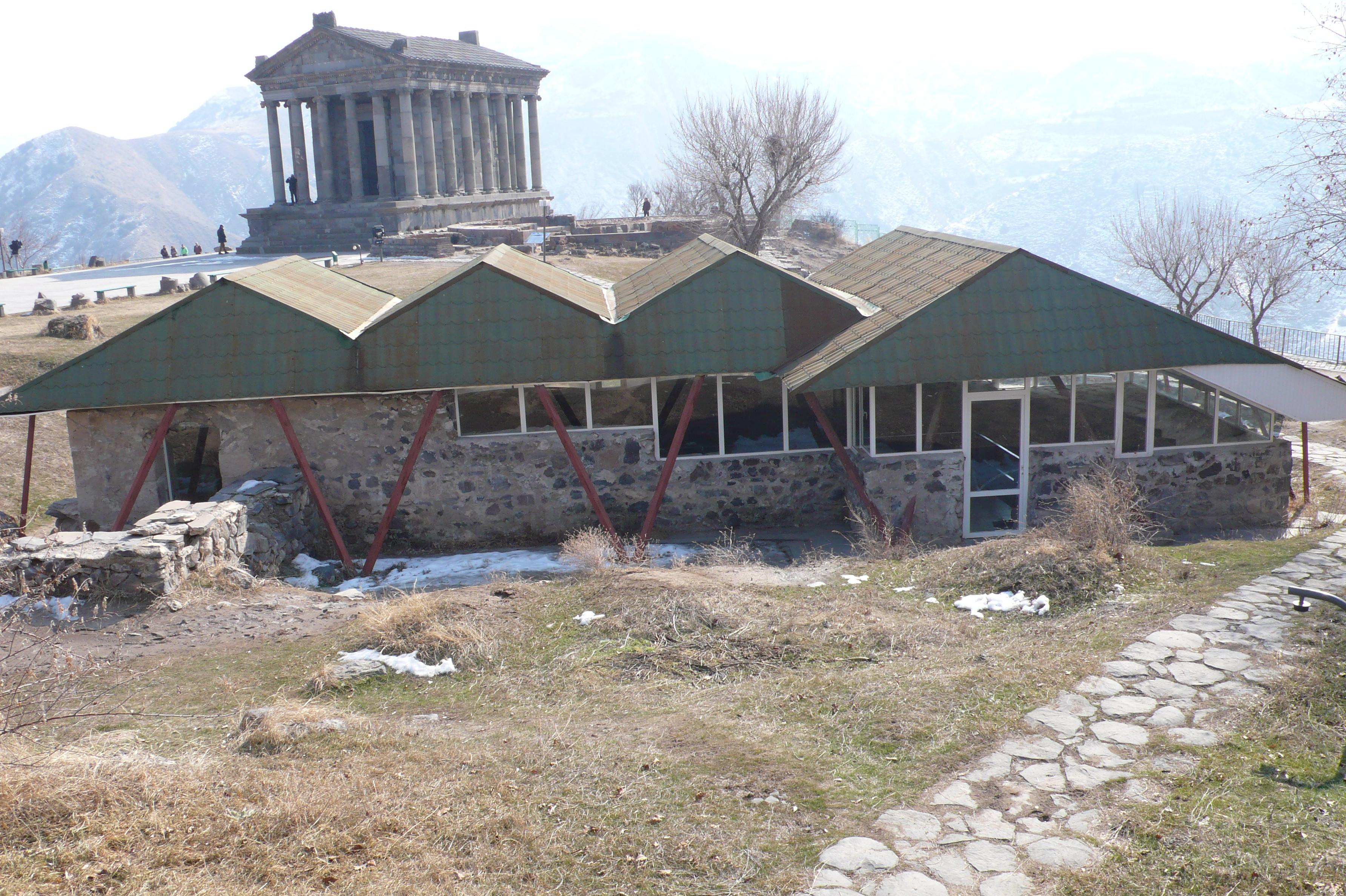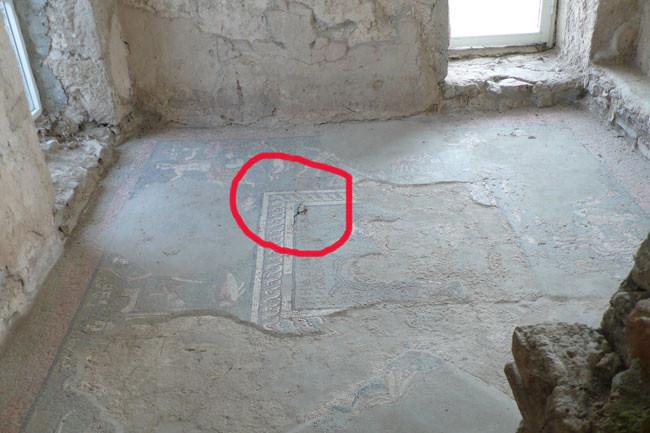
Neglected Garni: Royal Bathhouse Mosaic Decaying Daily
For the past twenty years, water leaking from the roof and walls of the 3rd century AD Royal Bathhouse, located at Armenia’s pre-Christian Garni Complex, has damaged the famed mosaic underneath.
The mosaic, replete with mythological symbols, is unique in that it remained intact over the centuries. That is until now.
The Garni complex, the temple and surrounding structures, is one of Armenia’s major tourist attractions.
Successive Armenian governments have argued that a lack of funds has prevented any needed repair and restoration. This argument, however, is debatable.
In 2013, according to government stats, 200,000 people visited Garni. The revenue received (entrance fees, etc.) amounted to 86.472 million AMD (US $211,423). Surprisingly, none of the money is used to preserve the best-known structure and symbol of pre-Christian Armenia.
In 2016, Armenia’s Service for The Protection of Historical Environmentand Cultural Museum-Reservations SNCO announced a tender to preserve the 3rd century AD Royal Bathhouse.
Arkit LLC, the Armenian branch of an Italian company, won the tender. Company Director Lucio Speka signed a contract, on September 22, 2016, with the SNCO to prepare a plan to make improvements to the site, including a drainage system. The company was to be paid 2.5 million drams and had to deliver the blueprints by October 31.
The monument, excavated during the Soviet era, had been uncovered for many years until 2002, when the Lincy Foundation provided funds to preserve the bathhouse. A tin roof was installed, and a glass casing built around the site. This was considered a temporary measure. This temporary fix has lasted for twenty years and caused a set of new problems.
The 2016 tender reads: "The floor of the royal bath and the lower parts of the outer walls are wet, as they are mainly below the level of the site. The water spilling from the roof doesn’t drain fully, the main reason for damage to the mosaic.”
The tender proposed a two-track renovation and repair program. The first would install a proper drainage system and a restoration of the surrounding walls. The second would tackle the damaged mosaic, using modern techniques to maintain its original integrity.
Deputy Minister of Education, Science, Culture and Sports Alfred Kocharyan recently told Hetq that Artik LLC carried out its part of the 2016 tender and presented a restoration and repair plan to the government. The plan never got off the ground due to a lack of funds.
Kocharyan told Hetq that the plan will be reviewed if funds are secured.
Hetq, in 2014, wrote the following about the sorry state at Garni.
“The mosaic in the bathhouse, depicting Greek mythological figures, is damaged. The walls of adjacent buildings are crumbling. The road leading to the temple itself is in disrepair.”
A year later, we addressed this issue again. We asked then Minister of Culture Hasmik Poghosyan what was being done to save the mosaic.
Vladimir Poghosyan, who headed the SNCO at the time, told Hetq that a project to protect the mosaic must first be commissioned and then presented for review.
Poghosyan said his agency had written to the Ministry of Culture in 2014 to officially sanction such a project, adding that his agency would fund the work itself.
A stated above, a plan to preserve the site was drawn up in 2016, only to remain on paper allegedly because of funding issues.
Data published by the United Nations World Tourism Organization (UNWTO) shows that, in 2019, 1.894 million tourists visited Armenia. Garni is at the top of their list of sites to visit.
The coronavirus and the 2020 Artsakh war decreased that number by 70% in 2020 and by 65% in 2021. Garni did not have a shortage of visitors since domestic tourism grew instead.
In 2019, foreigners visiting Garni had to pay a 1,500-dram entrance fee. Armenian citizens had to pay 750 drams. for the citizens of the Republic of Armenia. Thus, according to the crudest calculation, Garni enjoyed an annual income of 3 billion drams. In addition, private events provide a lucrative income, some of which caused a stir, such as in 2021 when the INGO insurance company staged a wedding at the site.
Government neglect of Garni remains a stain on the country’s stated cultural policy.
While the Garni Temple is a prime example of the pre-Christian culture in the region, it has yet to be included as a UNESCO World Heritage Site.
The repeated refrain of “a lack of funds” is a mere manifestation of deeper problems that need urgent review.
The government’s stated policy of fostering tourism as a prime pillar of Armenia’s economy stands in stark contrast to the reality on the ground at Garni.
 Videos
Videos Photos
Photos

Comments (2)
Write a comment